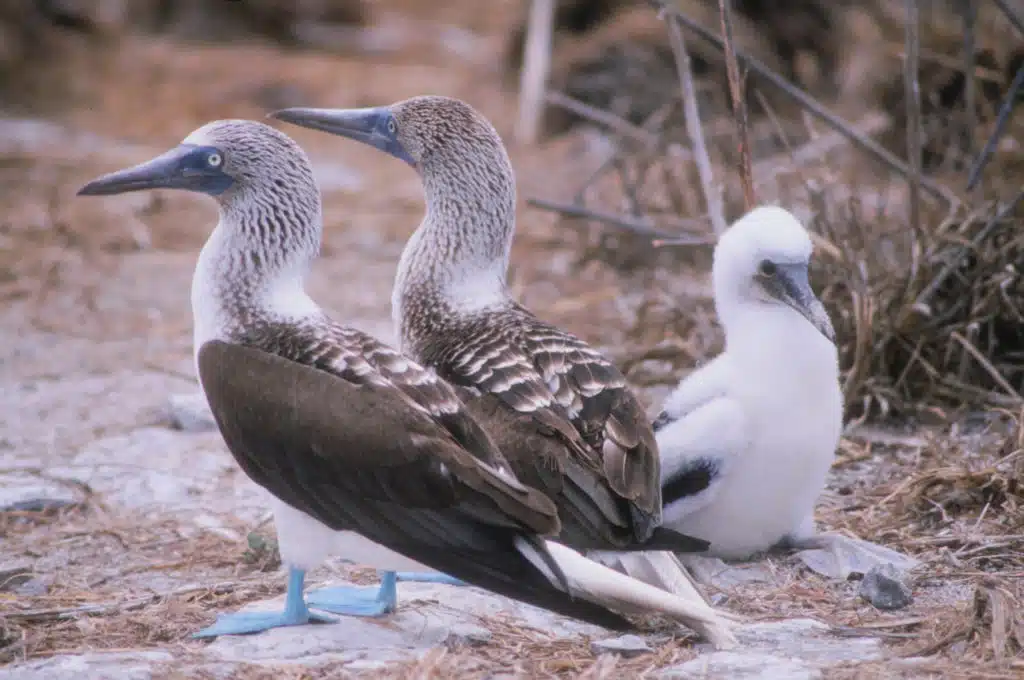Why don’t elephants (and humans) have thousands of little babies instead of one big one?
Sydney researchers have discovered and modelled the key factors responsible for offspring and family size.
Their model predicts what size offspring will be favoured by evolution. It will help conservation biologists understand what makes species endangered.
And it may help explain why human families tend to become smaller, rather than larger, as parents become richer and live longer.
The study will be published later this month in the journal The American Naturalist.
Why do mammals invest so much time and energy in their offspring? “It’s all to do with abundance of energy, safe environments, and intense competition,” says Daniel Falster, a doctoral student at Macquarie University.
He and his colleagues studied the family size for hundreds of animal and plant species from dingos, to gum trees and whales.
At the centre of Daniel’s work is a mathematical model which mimics the evolutionary process. By estimating the evolutionary pressure on a particular characteristic, such as the level of parental expenditure on each offspring, he can predict how that character will change.
The model can make predictions across the plant and animal kingdoms from butterflies to fish to gorillas and even humans. “Our model was able to explain some of the major offspring size patterns seen across species, such as why larger parents have proportionately smaller offspring, and why mammals have offspring some 10,000 times larger than plants,” Daniel says. “That gave us a lot of confidence that the fundamentals of the model were right.”
The key process in Daniel’s model is competition among rival offspring. The better an offspring is cared for and fed, the larger it tends to be, giving it an evolutionary advantage.
The importance of such size-selective competition is already well-known in plants, where height allows them to capture more sunlight, but Daniel suggests it may have been overlooked in other groups. “Our work shows that without competition, evolution would favour parents having many, tiny offspring,” Daniel says. “Elephants would be having thousands of little babies instead of one large one”.
In reality many species have small families, making their populations more vulnerable to extinction.
“A lot of endangered species also have very large offspring. They have low population growth rates, and this makes it hard for them to endure, or recover from, any sort of harvesting or loss.”
Daniel hopes that his model will help biologists struggling to understand what makes some species vulnerable to extinction.
Daniel also thinks his model helps explain aspects of human nature. Patterns in human demography are consistent with patterns seen among wild species, he says. “As parents get richer, live longer, and their environments become more benign, offspring become larger and family sizes become smaller. Our model explains why this demographic transition makes sense in light of evolution.”
Daniel Falster is one of 16 early-career scientists chosen for Fresh Science, a national program sponsored by the Federal and Victorian governments. He is presenting his research to the public for the first time.
Background
All animals and plants produce offspring to carry their genes into the future. Individuals with the largest number of offspring surviving to produce grand-babies are evolutionary winners; their genes will be well represented in future. While larger offspring generally have a better chance of surviving, they cost the parent more energy. So with a fixed amount of energy available for reproduction, parents have to strike the right balance between ‘how big’ and ‘how many’ babies?
Patterns in offspring size have long fascinated ecologists, but evolutionary theory to explain the patterns has been unsatisfactory. Now, PhD student Daniel Falster from Macquarie University has developed fresh mathematical theory that predicts which combinations of ‘how big’ and ‘how many’ will be favoured by evolution.
The model was developed in collaboration with colleagues, Professor Mark Westoby (also at Macquarie) and Dr Angela Moles (UNSW), between 2003-2007, and will form part of Falster’s PhD dissertation.
To test the model Falster compared the results to existing, natural populations for hundreds of mammal and plant species, all of which are continually being shaped by natural selection. The model explains several patterns already known to exist in nature, such as larger mothers having proportionately smaller babies, and mammals having babies that are much bigger than plants. Further, it suggests how these differences relate quantitatively to specific biological processes during recruitment.
Overall, Falster’s work helps to identify some clear similarities in the evolution of species as different as dingoes, gumtrees and butterflies, and at the same time points, to the most important ecological factors causing them to differ in how they raise their families.





 Fresh Science is on hold for 2022. We will be back in 2023.
Fresh Science is on hold for 2022. We will be back in 2023.